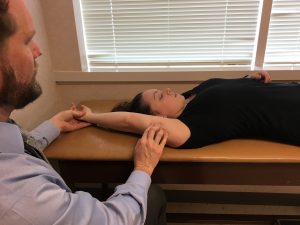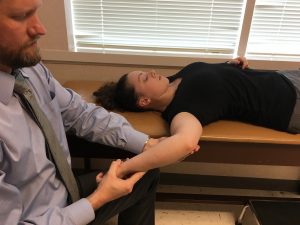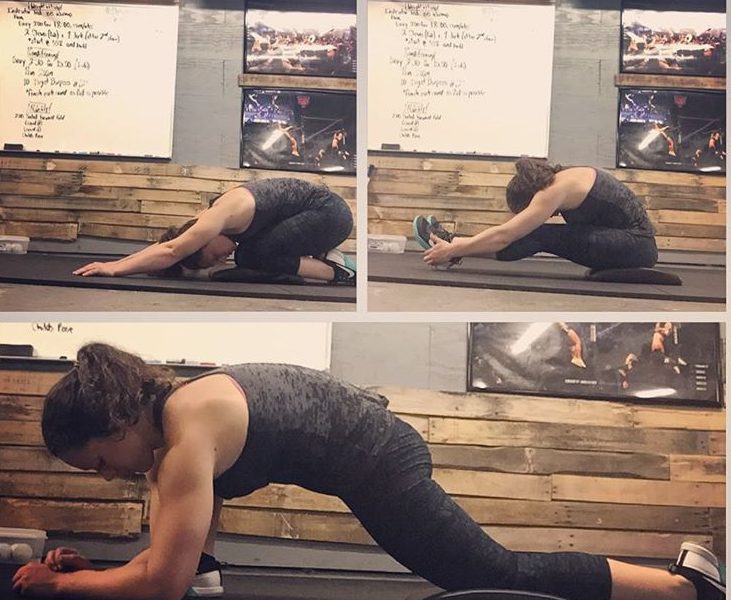Flexibility vs Mobility
Flexibility and mobility are two very common terms among the functional fitness community. People often use them interchangeably. However, they really represent two different concepts. Athletes and coaches understand good mobility is essential to performing exercises efficiently. Functional fitness exercises are also good at improving mobility.
Very rarely, however, do we take a moment to define what mobility actually is.
The terms flexibility and mobility are thrown around so frequently that people feel awkward asking for the actual definitions. Especially since these terms are often used in every day life. But just like a lot of common terms – such as muscle memory – what we think they mean might not be the true definition.
Flexibility
The ability to move a joint through a certain range of motion.

Range of motion can be tested both actively and passively done. Actively means you’re moving your joint through a certain ROM. Whereas passive motion is how far someone else can move your joint. Flexibility is typically measured in isolation. An example of flexibility is simply how far you’re able to bend your knee while lying flat on the ground.
Every joint has an assigned range of motion that is “within normal limits”. This means that, as long as you have motion at a joint between A and B, you have adequate ROM in that joint. Anything greater is excessive motion, and anything less is pretty stiff.
Mobility
Functional motion without restriction to your range of motion.
Mobility is built on a foundation of flexibility. It also includes other factors. If you are able to reach full depth in a front squat, you likely have good trunk and lower body mobility.
So what’s the difference between mobility and flexibility? The ability to achieve full depth in a front squat requires flexibility in the knees, hips, shoulders, elbows, and wrists. Without full flexibility in these joints, you cannot adequately hold a front rack. Which, in turn, prevents you from being able to balance properly. If you cannot keep the barbell on your shoulder and, therefore, over your center of gravity, you’ll dump the weight forward during the squat. And your poor wrists will complain about it afterwards.
Mobility is dependent on your strength, balance, and coordination.
Without balance and core control, you have a much more difficult time stabilizing an external weight during a movement or even just moving your own body. Minor differences in position and strength are magnified when dealing with a barbell or high-skill gymnastics movement. (Well, high skill for us lay-people.) Small shifts in heavy loads can rapidly progress to total failure of the lift.
Can You Have Too Much Flexibility?
The short answer? Yes.

We often associate stiffness with increased injury rates. However, the same can be said for having too much flexibility. Marfans Syndrome and Ehlers-Danlos Syndrome are connective tissue disorders that can cause ligamentous laxity. Other people are just “loose jointed”. People with excessive flexibility risk cartilage and soft tissue injury. When bones in a joint can move further than they’re supposed to, they can cause impingement and damage structures over time.
Think of ideal flexibility like the story of Goldilocks. Stiff athletes risk injury by forcing range of motion or placing their joints in unnatural positions. This can causes impingement on bones and tendons alike, leading to wear and tear over time. But, unless your sport requires super-physiological range of motion, such as dance or gymnastics, there is no benefit to having greater than normal ROM in a joint. Even then, there’s a reason elite dancers and gymnasts age out relatively early. Only a small percentage of the population can withstand this repetitive damage to their bodies without succumbing to injury.
You ideally want juuuuuust enough flexibility. The joint should move in its full range of motion. No more. No less.
How Can I Increase My Mobility?
What if you have enough flexibility in each joint but cannot perform an overhead squat? Maybe you need to work on balance or your strength in a certain range of motion. I highly recommend completing a functional movement screen with a physical therapist or qualified trainer. This is the quickest way to isolate your own deficiencies and create a game plan to correct them.
It’s important to note that even if you have flexibility and can perform a functional movement to all points of performance, but have pain during that movement you do not have enough mobility for this particular exercise. Pain is your body telling it has a weakness it cannot handle. Make sure to address your specific weakness, whether it’s stability or strength, before increasing the weight or technical difficulty of the movement you’re testing!
Stay tuned to our Instagram. Over the next few weeks, I’ll be posting my favorite exercises for improving overhead mobility and joint stability.
Ultimately, flexibility is the foundation for mobility, but flexibility alone is not enough. It’s only when strength, balance, and coordination are added to flexibility that you get true, functional mobility.

